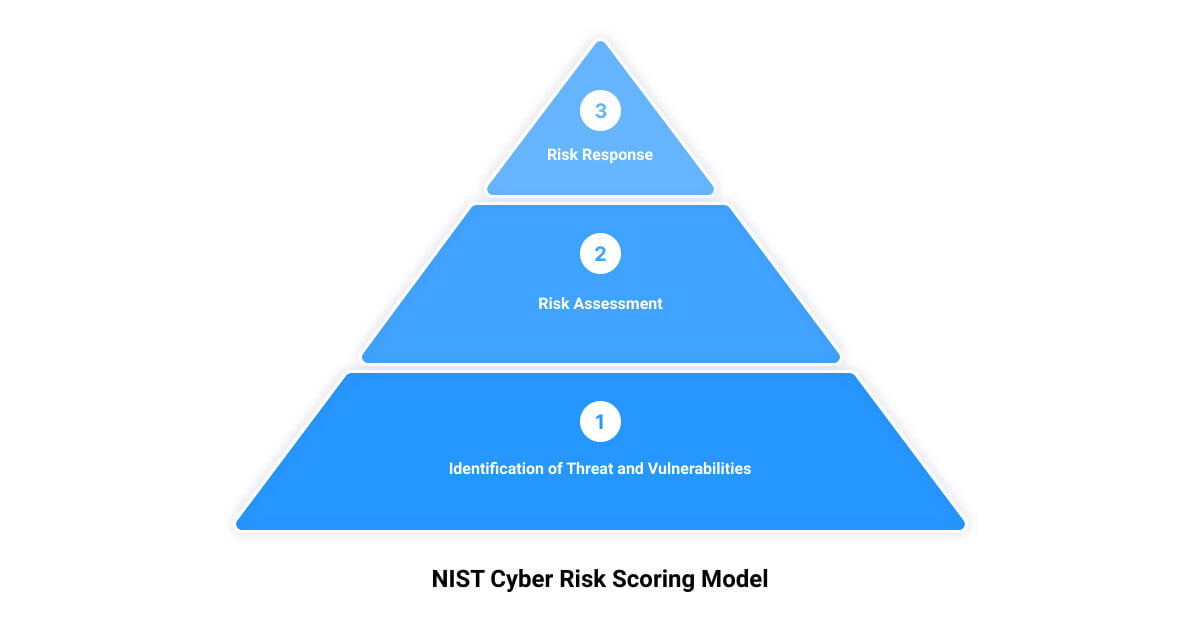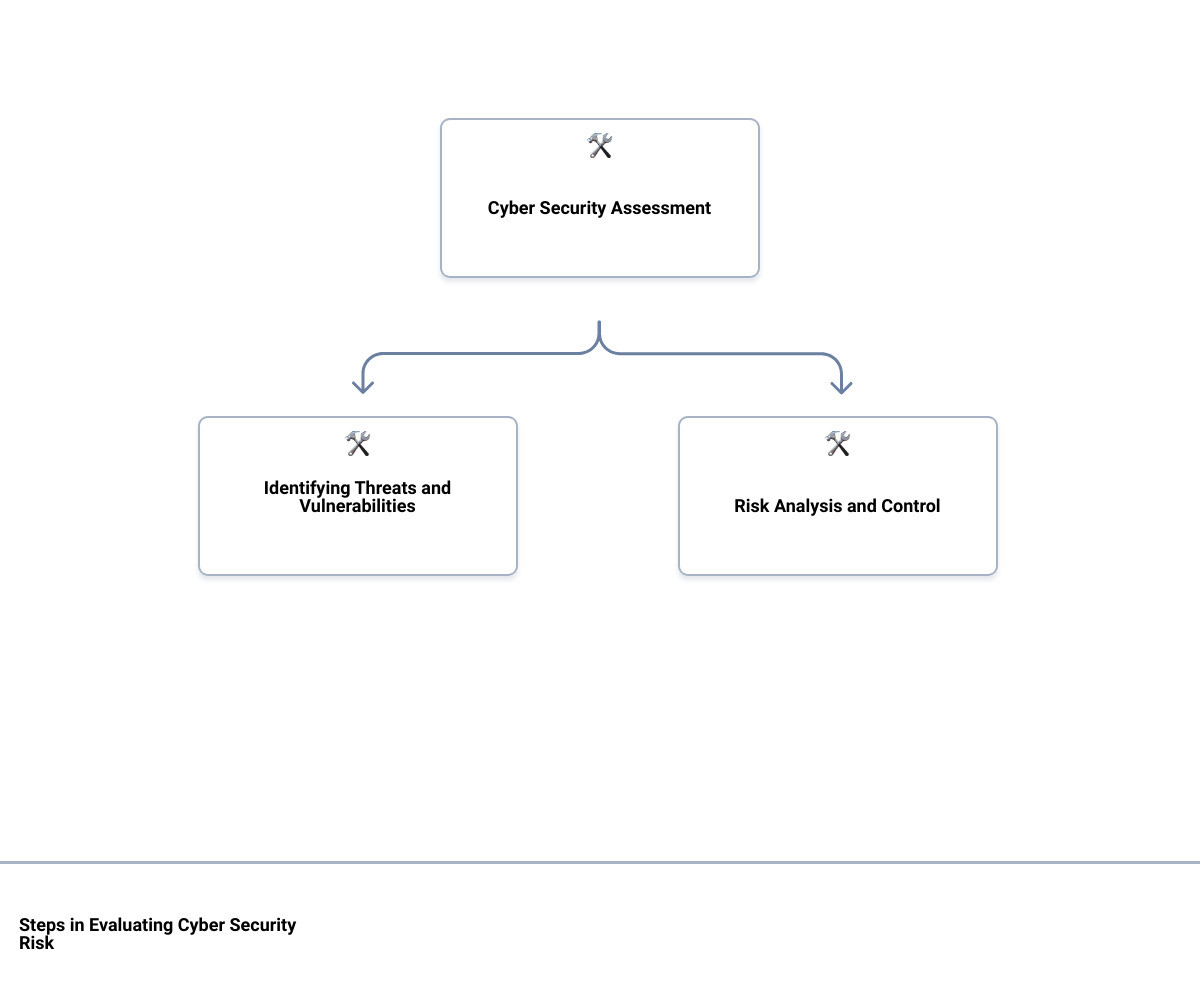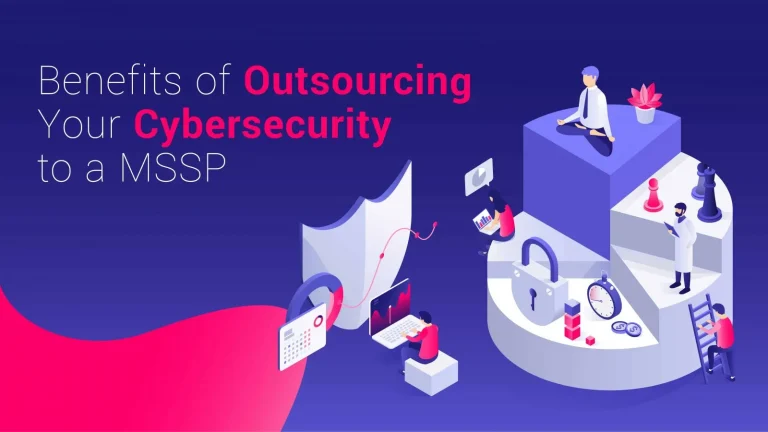The digital age has brought about many benefits for businesses, but it has also introduced a new realm of risks, particularly in the form of cyber threats. Today, cyber security risk ratings have become an essential component in assessing and managing these risks effectively. Whether you’re a small business owner in Wilmington, DE, or a multinational corporation, understanding cyber security risk ratings is key to safeguarding your business in this interconnected digital landscape.
Cyber security risk ratings are essentially a measure of an organization’s vulnerability to cyber threats. These ratings offer an objective benchmark for understanding the security posture of an organization and making informed decisions to mitigate cyber risks. They can significantly impact various aspects of your business, from insurance rates to M&A opportunities, and from CISO strategies to vendor evaluation and internal vulnerability management.
In a world where cyber threats are omnipresent, the importance of cyber security risk ratings cannot be overstated. They serve as a vital tool for businesses to understand their cyber risk landscape, prioritize their security investments, and constantly monitor and improve their cyber defenses. Businesses that neglect these ratings are potentially leaving themselves vulnerable to cyber attacks, which could lead to significant financial and reputational damage.
In this article, we will delve into the dark secrets of cyber security risk ratings, uncovering what they are, how they are calculated, their role in assessing your cyber security posture, and practical tips for improving your ratings. Our aim is to equip you with the knowledge and tools necessary to leverage these ratings effectively, enhancing your business’s cyber resilience and ultimately, its success in the digital age.
So, let’s kickstart our journey into the world of cyber security risk ratings. As we unravel these secrets, we hope to shed light on this critical aspect of cyber security, enabling you to protect your business against the ever-evolving landscape of cyber threats.
Understanding Cyber Security Risk Ratings
In a world where digital threats are as real as physical ones, understanding cyber security risk ratings is a vital lifeline for any business.
What is a Cyber Security Risk Rating?
A cyber security risk rating is a quantifiable measure of an organization’s vulnerability to cyber threats. Think of it as a credit score for your company’s digital security. This rating is calculated based on several factors, including the organization’s IT infrastructure, the sensitivity of their data, and the effectiveness of their current security controls. A high rating implies a robust defense against cyber threats, while a low score could indicate potential vulnerabilities that need to be addressed.
How is a Cyber Security Risk Rating Calculated?
Calculating a cyber security risk rating involves an in-depth evaluation of your organization’s IT ecosystem. The first step is to identify and prioritize IT assets. The cloud data, potential system vulnerabilities, current and planned controls, and the value of assets all play a significant role in this assessment.
The sensitivity of the data is also considered. For instance, records subject to consumer privacy rules or other regulatory frameworks require a higher level of data protection. IT asset discovery, particularly in the era of remote work, is vital to identifying potential cybersecurity vulnerabilities.
Lastly, a threat review is conducted, involving research into the external cybersecurity risks environment. The end result is a comprehensive risk score that presents an objective measure of your organization’s cyber risk posture.
The Role of Cyber Security Risk Ratings in Assessing Cyber Security Posture
A cyber security risk rating is more than just a number. It’s a powerful tool that helps organizations gauge their cyber risk posture. The rating provides insights into what percentage of the risk has been mitigated by controls, such as effective patch management and monitoring tools.
The score also helps to understand the level of residual risk or the amount of accepted risk that the organization is willing to tolerate. This accepted risk varies based on an organization’s cybersecurity budget, the ease of mitigating known vulnerabilities, and its overall risk tolerance.
In essence, understanding your cyber security risk rating is instrumental in creating a strong defense against cyber threats. By monitoring and improving this score, businesses can enhance their cyber security, ensuring the safety of their digital assets and the trust of their clients.
The NIST Cyber Risk Scoring Model
Navigating the cyber threat landscape can feel like a journey through a labyrinth. That’s where the NIST Cyber Risk Scoring Model takes the lead. This model serves as a beacon of light, guiding businesses in the right direction towards comprehensive cyber security.
An Overview of the NIST Cyber Risk Scoring Model
The National Institute of Standards and Technology (NIST) Cyber Risk Scoring Model is a comprehensive framework designed to evaluate an organization’s overall cybersecurity stance. This model operates on a scale, assigning each control an initial weight ranging from 1 to 10. This weight is determined through a thorough evaluation of the control’s significance in relation to the organization’s overall security and privacy stance.
How the NIST Model Rates Cyber Security Risks
The NIST Model assesses cyber security risks based on defined metrics and a baseline. Each control’s weight is then used to calculate the severity of the risk. For instance, a control with a higher weight indicates a higher risk level. This rating helps organizations understand their cyber risk landscape better, allowing them to implement effective security measures accordingly.
The Significance of the NIST Rating Scale in Cyber Security
The NIST Rating Scale plays a crucial role in shaping an organization’s cyber security strategy. It assists public safety organizations in understanding the cyber risks to their operations, providing a data-driven, quantifiable measurement of an organization’s overall cybersecurity performance.
It’s not just a score, but a comprehensive, critical assessment of the level of security of an organization’s networks and systems. This assessment is based on a review of a company’s internet-accessible systems, enhanced with other factors like the strength of passwords, the use of encryption technology, and the number of firewalls implemented.
The NIST Rating Scale essentially serves as a cyber security health check, enabling organizations to identify areas where they can improve their defenses and reduce their exposure to cybercrime.
In conclusion, the NIST Cyber Risk Scoring Model is an indispensable tool for businesses seeking to fortify their cyber defenses. By understanding and improving your NIST Score, you can ensure a robust cybersecurity posture, protecting your digital assets, and ultimately, your business’s reputation.
Evaluating Cyber Security Risk: A Step-by-Step Guide
In the rapidly evolving digital landscape, evaluating cyber security risk is no longer a choice, but a necessity for businesses of all sizes. It is a comprehensive process that involves several key steps, aimed at identifying, analyzing, and mitigating potential threats to your organization’s digital assets. Follow this step-by-step guide to effectively evaluate your company’s cyber risk and strengthen your defenses.
Defining Cybersecurity Threats
The first step in evaluating your cyber risk is to identify potential threats. These could range from phishing attacks, malicious software, data breaches, to cloud vulnerabilities. Recognize that threats can come from both external and internal sources.
Identifying Security Vulnerabilities
Once you’ve defined potential threats, you need to identify the vulnerabilities in your system that these threats could exploit. This could include outdated software, weak passwords, or unsecured employee devices. Tools like Centraleyes offer streamlined approaches to assessing these vulnerabilities and quantifying the risk associated with them.
Determining Threat Likelihood and Impact
Next, assess the likelihood of each threat occurring and the potential impact on your business operations. This will help you prioritize the most significant risks that could have a substantial impact on your business.
Cataloging Information Assets
To further refine your risk assessment, catalog your information assets. These could include databases, servers, applications, and confidential data. Prioritize these assets based on their role in your organization’s operations. Critical data should be given higher priority in your cybersecurity planning.
Assessing and Analyzing the Risk
Now, analyze the risks associated with each asset. Consider the sensitivity of the data, potential vulnerabilities, and the potential consequences of a breach. This analysis will provide you with a clear picture of your organization’s cyber risk landscape.
Setting Security Controls
Based on your risk analysis, set appropriate security controls to mitigate these risks. This could include policies, processes, technologies, and staff training. Regular software updates, strong password management, and multi-factor authentication are all essential controls that can help improve your cyber security posture.
Monitoring and Reviewing Effectiveness
Finally, continuously monitor your cyber security risk levels and the effectiveness of your controls. Look for any suspicious activity and respond quickly if anything seems out of the ordinary. Regular monitoring will help you track your progress towards meeting compliance requirements and allow you to adjust your strategies as needed.
Evaluating your cyber security risk is not a one-time activity but an ongoing process. As threats evolve, so must your strategies to combat them. By following this step-by-step guide, you can set your business on a path to a strong and resilient cyber security posture. Remember, the goal is not to eliminate all risks, but to manage them at an acceptable level while ensuring that your business can continue to operate and grow.
Improving Your Cyber Security Risk Rating: Practical Tips
Unlocking the mystery of an enhanced cyber security risk rating isn’t as daunting as it may seem. With a well-structured plan and proactive measures, you can significantly boost your company’s cyber security posture. Let’s delve into some practical tips to help you embark on this journey.
Developing a Cyber Security Risk Management Plan
A robust cyber security risk management plan is the cornerstone of a high cyber risk score. This plan should address your organization’s risk tolerance, the value of your assets, and the potential impact of a data breach. It should also prioritize your IT assets and evaluate the risk associated with each, from cloud data to on-premise systems. Remember, your plan should be flexible to accommodate the evolving cyber threat landscape and the changing needs of your business.
Keeping Software Updated
Software updates are not just about adding new features. These updates often contain patches for security vulnerabilities that have been identified by the software’s developers. Ignoring these updates can leave your systems exposed to potential cyber threats. Therefore, ensuring that your software is always up-to-date is an essential step in maintaining a high cyber security risk rating.
Implementing Strong Password Management
Weak or reused passwords are a common entry point for cyber attackers. Implementing a strong password management strategy can significantly reduce this risk. This can involve the use of a secure password manager, enforcing regular password changes, and educating staff about the importance of strong, unique passwords.
Investing in Website Security Tools
Security tools can provide an extra layer of protection for your online assets. Tools such as firewalls, intrusion detection systems, and antivirus software can help detect and prevent cyber threats. Moreover, investing in a cyber risk rating product, like the one offered by Dun & Bradstreet, can provide you with an objective assessment of your organization’s cyber risk.
Monitoring for Suspicious Activity
Continuous monitoring of your IT environment can help you detect and respond to cyber threats in a timely manner. This can involve tracking unusual network activity, regularly reviewing access logs, and setting up alerts for potential security incidents. By identifying and addressing threats early, you can prevent them from escalating into full-blown security incidents.
Improving your cyber security risk rating is an ongoing effort that requires commitment and strategic planning. By implementing these practical tips, you can elevate your cyber security posture and ensure that your business remains resilient in the face of cyber threats.
The Role of Cyber Security Risk Ratings in Business Operations
In today’s digital world, cyber risk ratings play an integral role in shaping various business operations. Their influence extends beyond the realm of IT departments, impacting everything from insurance rates to vendor evaluation.
How Cyber Security Risk Ratings Impact Insurance Rates and M&A Opportunities
First, let’s shed light on how cyber security risk ratings impact insurance rates and opportunities for mergers and acquisitions (M&A). Insurance companies have started to closely scrutinize cyber risk ratings when determining premiums for cyber insurance policies. A lower risk rating – indicating a more secure business – could lead to significantly lower premiums.
Conversely, M&A transactions are increasingly influenced by the cyber health of the target company. A strong cyber risk rating could be a compelling selling point, indicating that the company has robust security controls in place and a lower likelihood of experiencing a costly and disruptive cyber incident.
Using Cyber Security Risk Ratings to Justify CISO Strategies
Cyber security risk ratings also play a pivotal role in aiding Chief Information Security Officers (CISOs) to justify their strategies and investment proposals. For instance, if a CISO proposes a significant investment in security technology or training, a high cyber risk rating could provide the data-driven evidence needed to convince the board of directors or other stakeholders of the necessity of the investment.
The transparency provided by these risk ratings can help CISOs demonstrate the impact of their initiatives over time, benchmark the organization’s progress against peers, and identify critical areas of risk that need attention.
The Importance of Cyber Security Risk Ratings in Vendor Evaluation and Internal Vulnerability Management
Finally, cyber security risk ratings are an invaluable tool for vendor evaluation and internal vulnerability management. They provide an objective measure of a supplier’s cyber health, helping companies to avoid doing business with organizations that could introduce risk into their supply chain.
Internally, these ratings can help security teams to identify and prioritize vulnerabilities for remediation. They provide a clear view of the organization’s security posture, enabling teams to focus their efforts where they will have the most impact.
In conclusion, cyber security risk ratings have far-reaching implications for business operations. By understanding and effectively leveraging these ratings, businesses can make more informed decisions, reduce cyber risk, and ultimately protect their bottom line.
Conclusion: The Future of Cyber Security Risk Ratings
As we venture into the future, the role of cyber security risk ratings in securing businesses against potential digital threats cannot be overstated. As the digital landscape expands, with businesses increasingly reliant on technology and interconnected systems, the potential for security vulnerabilities also grows. In this light, cyber security risk ratings, like those provided by the Upper Echelon Technology Group, will continue to be an invaluable tool in the cybersecurity toolkit.
The evolution of cyber threats will necessitate a corresponding evolution in the ways we assess and handle those threats. In this context, cyber security risk ratings will become an even more critical component of a comprehensive security posture. These ratings will continue to provide an objective measure of an organization’s security performance, helping to identify areas of risk and prioritize remediation efforts.
Furthermore, as the cyber risk landscape becomes more complex, the sophistication and accuracy of cyber risk ratings will also need to improve. Future advancements in technology, like artificial intelligence and machine learning, could further enhance the precision of risk assessments, making them more predictive and capable of identifying threats even before they materialize.
Additionally, regulatory bodies and industry standards will likely continue to evolve, underscoring the importance of maintaining a strong cyber security risk rating. Businesses that can demonstrate a robust security posture through favorable risk ratings will be better positioned to navigate regulatory requirements, avoid penalties, and maintain the trust of their customers and partners.
Finally, the future of cyber risk ratings will be shaped by the growing recognition of cyber risk as a critical business risk. As companies continue to understand the potential financial and reputational damage that cyber threats can cause, they will undoubtedly place greater emphasis on maintaining strong cyber risk ratings. This will lead to a shift in business culture where cyber security risk management is not just an IT concern, but a top priority across all levels of the organization.
In conclusion, the future of cyber security risk ratings is bright and crucial. Businesses that understand this and take proactive steps to manage their cyber risk effectively will be the ones that thrive in the digital age. With the right approach, and by leveraging the services of cybersecurity-focused managed services providers like Upper Echelon Technology Group, businesses can turn cyber risk management from a daunting challenge into a strategic advantage.






